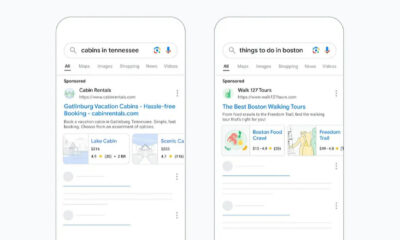SEO
Google Ads Introduces New Experiments Page

The days of confusing drafts and experiments in Google Ads are over.
Google launched a much-needed update to this testing feature in the online interface, and the new experience is a welcome change to beginner and experienced Google Ads users alike.
The previous Drafts & Experiments pages were considered to be a roadblock to novice Google Ads users because of the complications and multiple steps.
Let’s take a look at the new and exciting changes.
The New Experiments Page
In the previous experience, you were first required to create a campaign draft, and then test that draft separately in an experiment.
Confusing, right?
With the new Experiments update, you can now create an experiment (or test) in one step. That means no more creating drafts first!
What is a draft, you may ask?
A draft was a way for you to propose changes to a Search or Display campaigns, and then applied that to a new campaign. It was essentially mirroring an existing campaign setup, but with slight alterations that you wanted to test or experiment.
Additionally, you will now be able to monitor all tests on the Experiments page. From this page, you are able to apply any experiment changes in one click.
This change in the application process helps avoid any implementation issues on the user’s end.
 Image: Screenshot taken by author from Google Support website, January 2022
Image: Screenshot taken by author from Google Support website, January 2022The New Syncing Experience
Google has also rolled out a new way to sync experiments to campaigns. This change makes it easier for you to run experiments.
Before this new and improved rollout, copying changes from your original campaign was a manual process, not to mention time-consuming for the user.
So, what’s changing with the new experience?
Google Ads will automatically sync any changes from the experiment to the original campaign being tested.
 Image: Screenshot taken by author from Google Support website, January 2022
Image: Screenshot taken by author from Google Support website, January 2022What Is Staying The Same?
While the setup of an experiment has changed for the user, not all features have.
For example, you are still able to set the length of the experiment as well as how much of the original traffic budget you’d like to dedicate to the test.
How To Improve Ad Campaigns
The new Google Ads experiments rollout has numerous benefits to users, including:
- Saving time on experiment creation
- Better transparency on results
- Easier to create and sync changes to existing campaign(s) during testing phase
- Less room for implementation errors
Improvements from this rollout is a domino effect.
With this new and exciting interface, you will easily be able to see what you are testing. Because of the new syncing experience, you are able to adapt to any campaign fluctuations in real-time, improving your campaigns during the testing phase.
With easy monitoring on the Experiments page, you can clearly claim a winner of any experiment and apply all changes within seconds.
These improvements in the user experience can advance your testing capabilities and enable you to run more tests, sometimes at a faster rate. You will be able to spend more time analyzing and less time manually creating or drafting experiences.
Feel more confident in your experiment results by trying out the new Google Ads Experiments page today.
Source: Google Ads Help
Featured Image: Kiselev Andrey Valerevich/Shutterstock

















You must be logged in to post a comment Login